I am having a hard time understanding what boost:::dynamic_bitset, or std::vector do internally. What I eventually want to do is compose a network frame and send it via socket, but I just cannot convert them in a way that keeps the bit order I assembled...
#include <iostream>
#include<stdio.h>
#include "boost/dynamic_bitset.hpp"
int main()
{
boost::dynamic_bitset<> b(8, 10); // 8 Bits, value 10
std::cout << "b = " << b << std::endl; // as expected
printf("Vector size: %i\n", b.size());
printf("Bits: %d", b); // ?
return 0;
}
I understand that the class overloaded the << stream operator, therefore I have correct output, while printf seems to show the raw structure. Appears not even deterministic to me (below repeatedly executed the same .exe without recompiling):
My questions:
- What happens basically under the hood? Apparently it is not at all comparable to an array.
- How can I send such a bitset via socket send() ?
